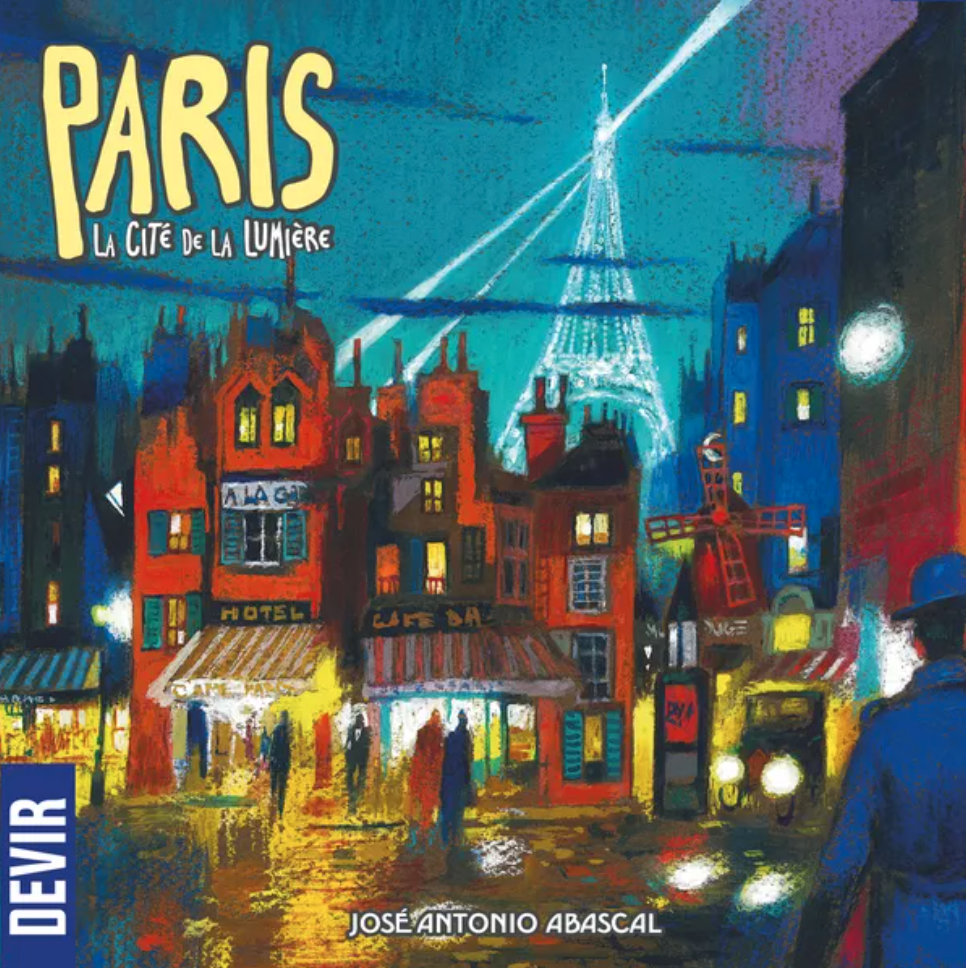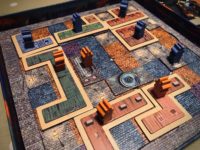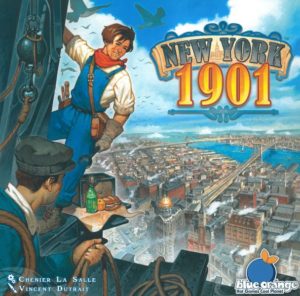- Learning time
- minutes
- First play time
- 40 minutes
Paris: La Cité de la Lumière
Designed by: Jose Antonio Abascal Acebo
It’s 1889 in Paris, and the already-celebrated city is going through the electrical revolution, with streetlights now bathing the Seine and surrounds in illumination. As architects/builders/planners – it’s fairly abstract – the players job is to construct their buildings, as much as possible, under the glow of these lights to make their own properties more alluring.
The game takes place over two phases. In phase one (planning) you and your opponent take turns choosing one of two possible actions. You can lay one of your tiles on the board – actually the inside of the box itself – representing, in essence, planning permission: you can only build on spaces of your own (blue or orange) colour cobbles, or the neutral purple. Or, instead of laying a tile, you can pick up a building, in order to construct it in phase two. Picking up buildings is good, because only by constructing them will you score any points. But gathering too many buildings isn’t a good idea, because if you can’t build them before the game is out, they cost you negative points.
When all tiles have been placed, phase two begins. This is, to a large degree about getting your buildings up. Following the placement rules mentioned above, your task is to get all of your buildings (or as many as possible) on the board, and ideally next to streetlights. Every streetlight a building is next to will be multiplied by its’ size to give you points. You also score the collective size of your biggest grouping of your own buildings.
But as with phase one, there’s a second option here as well. Instead of placing a building, you can take one of the special actions by placing a token on it – each player has four tokens, and you spend all of them. The special actions are many; a dozen, in fact, so we won’t list them all here… but essentially they are potentially game-winning moves when utilised correctly. You might extend a building, add a new streetlight, swap a building you can’t get onto the board with an unclaimed building and so on. In each instance, the card of the special action is then flipped over, showing it to be unavailable. As soon as all (place-able) buildings are placed and all tokens spent, scores are totalled and the player with most points wins.
The guru's verdict
-
Take That!
Take That!
A lot. Some polyomino (tetris-style) games have a very gentle vibe of doing your own thing before comparing scores at the end. This is a bit more cut-throat.
-
Fidget Factor!
Fidget Factor!
Low to moderate, depending on who's playing. The rules are simple...
-
Brain Burn!
Brain Burn!
...but timing is important, and you may risk grabbing a special action hoping the spot you want to build on isn't taken.
-
Again Again!
Again Again!
It's not a game that screams variety, but it doesn't need any more than what's in the box to always be a challenge. The tile layout can go numerous ways, and players decisions will change along with them.














Sam says
This is a really clever little game that takes gentle polyomino tile-laying games such as Barenpark and turns it into something of a battle. There's a caginess to proceedings that really appeals to me - I'm not particularly good at them, but I enjoy games that have these overlapping objectives where players are getting in each others way. Paris does that deftly enough so each setback feels like it could be mitigated, if you can just find the right move. And conversely, a strong position isn't always a banker, because clever use of the special actions can swing enough points someone's way to keep things competitive. So you have the tile laying (twice) special actions (4 times) bundled up in very interactive play space - all inside thirty minutes! You need to enjoy the slightly combative air to proceedings, but if you do, this one is a recommend.